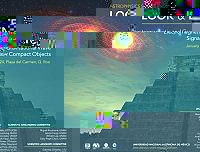›Look & Listen: Electromagnetic and Gravitational Wave Signals from Compact Objects (Mexican School of Astrophysics)
The processes leading to the formation, and various stages in the evolution of compact objects, are powerful sources of electromagnetic emission. They are also the strongest emitters of gravitational waves, as yet undetected directly but manifested in the decay of double pulsar systems at rates consistent with the predictions of General Relativity. In the coming years, two fundamental changes in astronomy will lead for the first time to the possibility of coupling this knowledge in such sources, allowing us to both look and listen for some of the most extreme objects in the Universe: the systematic development of time-domain astronomy, and the observational search for gravitational waves. The synergies between the two, at the crossroads of strong gravity, nuclear physics, stellar evolution and high energy astronomy are the topic of this school, aimed at advanced undergraduate and beginning graduate students seeking to develop these topics in their research.
The school will last for two weeks, giving ample time for interaction between lecturers and students. The first week will be in principle devoted to general introductions on each topic, and in the second we will go in-depth along more defined lines.
Track this event on your Apple calendar














 Mexico
Mexico